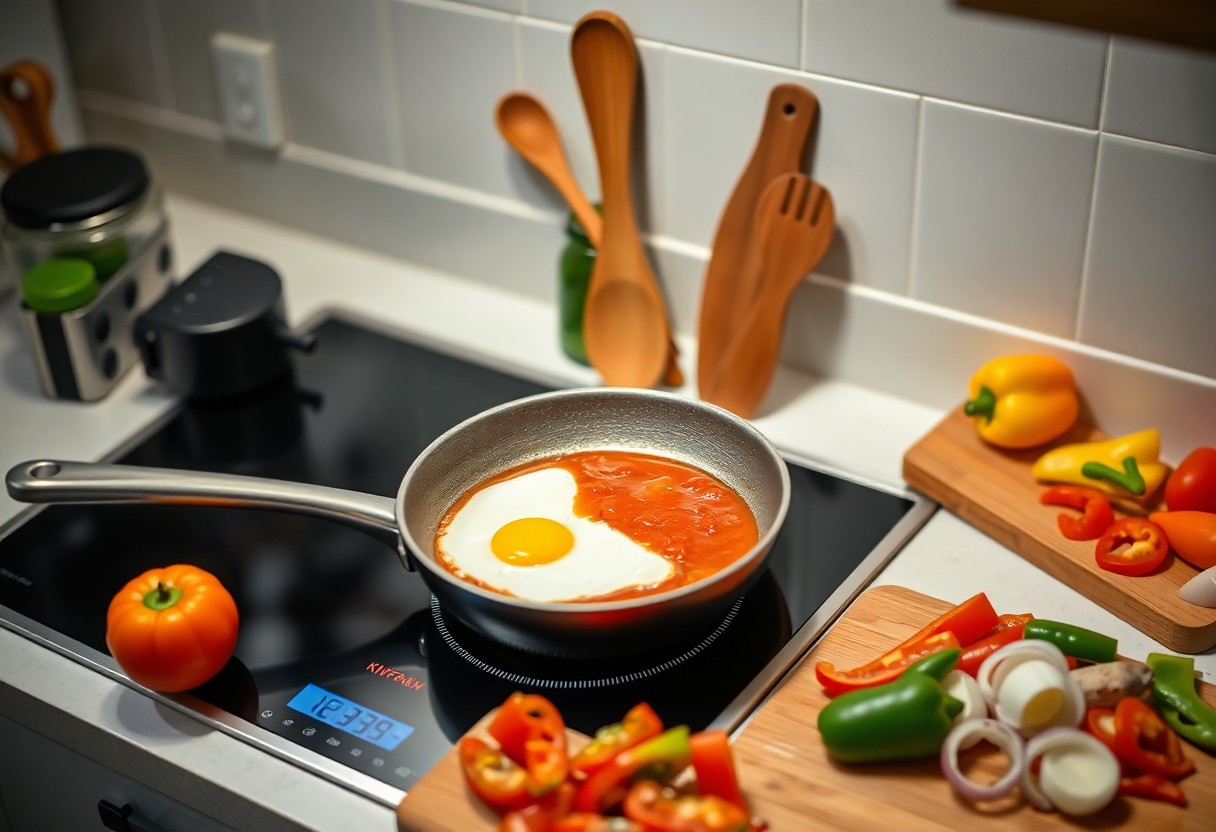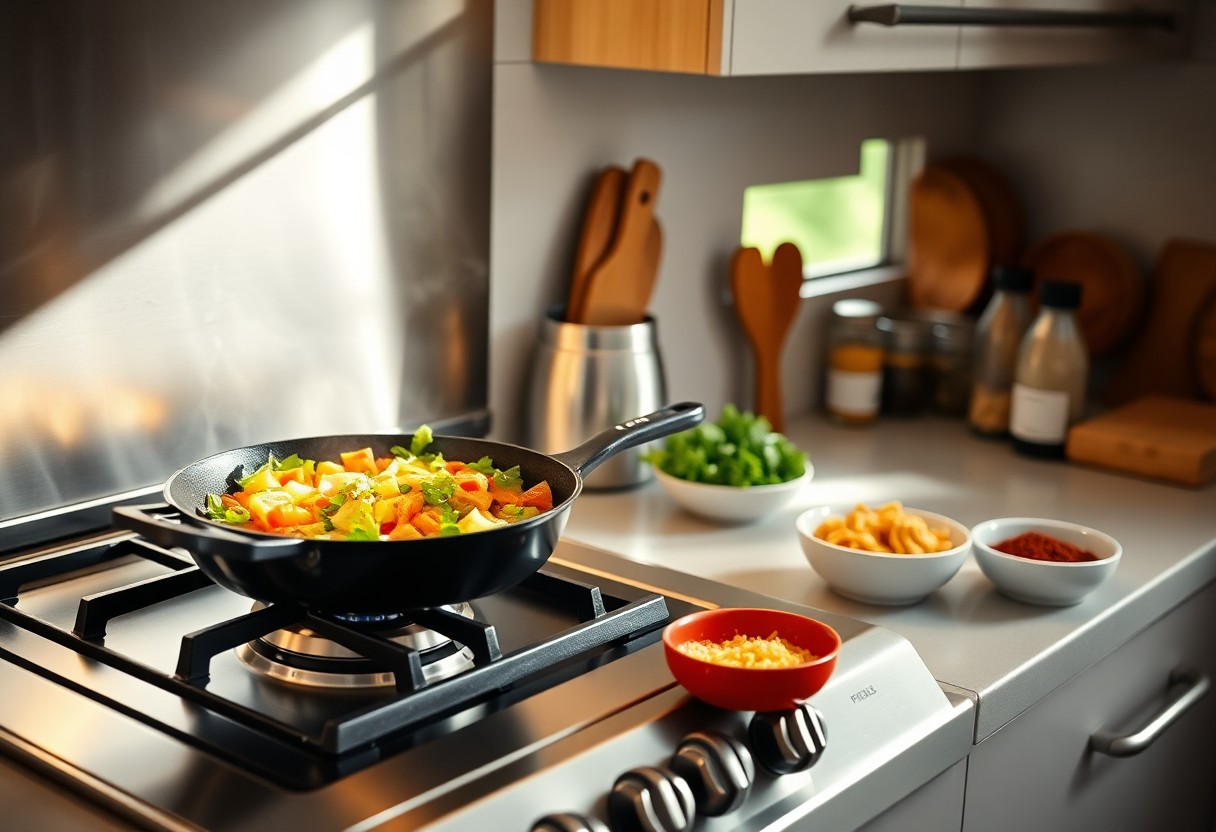It’s crucial to have an efficient stove setup that allows you to prepare meals quickly and safely. You’ll want a stove that not only delivers intense heat for rapid cooking but also offers versatility for different meal types. This guide will elaborate on the key components of my favourite setup, ensuring you maximise your cooking potential while minimising risks associated with high temperatures. Whether you’re a seasoned chef or a beginner, these tips will elevate your culinary experience and fill your plate with satisfying meals in no time.
The Essential Elements of My Setup
The foundation of a successful stove setup lies in selecting the right components tailored to your needs. A good balance between speed, efficiency, and ease of use is necessary for whipping up delicious meals in no time. Each element plays a pivotal role in maximising your cooking experience, enabling you to enjoy hassle-free meal preparation whether you’re at home or on an adventure.
The Right Stove Choice: Fuel and Function
Your stove choice significantly impacts your cooking efficiency, with different options available depending on your fuel preference. Gas stoves generally provide rapid heat, while electric models offer consistent temperature control. If you’re camping, consider portable options like butane or propane stoves, which deliver quick results with minimal setup.
Key Accessories That Make a Difference
To elevate your cooking experience, several accessories can transform how you prepare meals. A sturdy, non-stick pan facilitates even heating and straightforward food release, while a reliable windscreen guarantees efficient fuel usage outdoors. Additionally, a multi-functional utensil can save space and streamline your cooking process.
A quality pan, for example, not only helps distribute heat evenly but also reduces cooking time, allowing you to enjoy your meals without hours spent in the kitchen. Investing in a compact windscreen enhances your stove’s performance by redirecting heat during blustery days, preventing wasted fuel. With a lightweight, multi-purpose utensil, you can measure, stir, and serve—all in one tool, making it necessary for fast-paced cooking situations. Choosing the right accessories ultimately enhances your overall efficiency and enjoyment while preparing meals.

Speed and Efficiency: The Art of Meal Preparation
Mastering meal preparation can significantly enhance the speed and efficiency of your cooking experience. By implementing a few key strategies, you can transform your kitchen routine and ensure delicious meals are whipped up in no time. Focus on organisation, streamline your process, and enjoy the benefits of a well-coordinated cooking environment that supports quick, hot meals without sacrificing flavour or quality.
Prepping Ingredients for Rapid Cooking
Preparing your ingredients in advance is important for maximising efficiency. Chop vegetables, marinate proteins, and measure spices before you even turn on the stove. Working in batches also helps; for example, if you’re making a stir-fry, cut all your ingredients in one go to save time during the actual cooking. This pre-emptive approach allows you to engage with the cooking process seamlessly and ensures everything is ready when you need it.
Timing Techniques and Heat Management
Optimising cooking times and effectively managing heat levels can drastically speed up your meal preparation. Start by having all ingredients at hand and categorising them based on their cooking time. For example, dense vegetables like carrots should go in first, while quick-cooking items like leafy greens can be added later. Understanding the behaviours of different stoves also plays a role; adjusting the flame or temperature to suit each cooking method will streamline the process and prevent delays.
Utilising proper timing techniques involves not just the order in which you add ingredients, but also closely observing how your stove responds. For instance, high temperatures can quickly sear meat, while lower temperatures allow you to simmer sauces without burning. By keeping your tools – such as a timer – at hand, you can adhere to cooking times more effectively. This degree of control can transform cooking from a chore into an enjoyable and efficient activity, ensuring your meals are both quick and scrumptious.
Ideal Cooking Methods for Quick Flavours
Employing the right cooking methods can drastically enhance the flavour of your meals while keeping preparation time to a minimum. Quick techniques such as stir-frying, sautéing, and high-heat grilling allow ingredients to caramelise rapidly, creating complex flavours without lengthy cooking times. You’ll achieve that sought-after depth of taste with just a little oil and high temperatures, ensuring delightful meals ready in a flash.
High-Heat Searing vs. Slow Simmering
High-heat searing is a technique that locks in juices and caramelises the surface of meats and vegetables, producing bold flavours in moments. In contrast, slow simmering extracts flavours over time, allowing more subtle notes to develop. While searing is ideal for quick meals, slow simmering may require more planning yet rewards patience with rich, layered tastes.
Maximising Flavour with Minimal Time
To ensure maximum flavour in minimal time, consider incorporating ingredients that naturally carry bold flavours, such as fresh herbs, citrus zest, and garlic. Pairing these with rapid cooking techniques enables you to introduce complexity without lengthy preparation. For instance, a simple stir-fry with ginger, soy sauce, and fresh coriander can deliver punchy flavours in just minutes.
Experiment with combinations like fresh herbs and spices to elevate your dishes in seconds. For example, adding a handful of finely chopped basil to a sizzling stir-fry can give your meal an aromatic boost. Additionally, consider marinating proteins for even a short period; this small time investment pays off by infusing your ingredients with robust flavours. Don’t forget the power of a quick pan sauce made from deglazing your skillet post-cooking, which encapsulates all those concentrated, delicious flavours in a flash. With the right techniques at your disposal, you can truly maximise flavour with minimal time and effort.
The Joy of Experimental Cooking in a Fast Setup
Experimenting in the kitchen unveils a world of flavours and creativity, especially when you have a fast stove setup. The ability to throw together ingredients on a whim—whether you’re whipping up a spicy stir-fry or a hearty pasta dish—brings an exhilarating sense of freedom. You can easily combine leftovers with fresh produce, forging unique flavour profiles that become signature dishes. This spontaneity is not just efficient; it nurtures your culinary instincts and allows you to discover delightful surprises in every bite.
Overcoming Kitchen Fear: Creative Approaches
You might find the kitchen intimidating, but tackling this fear can lead to astonishing discoveries. A simple change in perspective turns perceived disasters into delicious experiments. Try swapping out expected ingredients for alternatives you have on hand, or challenge yourself to use a new spice each week. Embracing mistakes—like an over-salted sauce or an oddly textured dish—can spark moments of genius, bringing skills to the forefront you never knew you had.
Spontaneous Recipes That Impress
Creating spontaneous recipes is not just about throwing ingredients together haphazardly; it’s a skilled dance of flavours and textures. For instance, you can surprise guests with a creamy risotto made from leftover rice, enhanced by sautéed mushrooms and a splash of white wine. Another impressive dish could be a quick Moroccan-inspired tagine using whatever veggies and chickpeas you have on hand, all finished with a sprinkle of fresh herbs. Such spontaneity doesn’t just save time; it showcases your inventive flair in the kitchen.
These spontaneous recipes can leave an impression that rivals those extravagant meals. You might create a pasta dish infused with fresh lemon zest and roasted garlic or whip up a robust frittata with whatever vegetables languish in your fridge. The trick is to boldly mix and match flavours—perhaps toss in a daring ingredient like feta cheese or a handful of pesto for an unexpected twist. Such culinary improvisation not only delights your palate but also reflects your unique style, ensuring every meal tells a story of creativity and adventure.
Troubleshooting Common Cooking Challenges
Navigating the world of cooking can sometimes be tricky, especially when you’re aiming for that perfect meal. Understanding common issues and how to resolve them can significantly enhance your cooking experience. Whether you’re dealing with a dish that’s too dry, flavours that clash, or a lack of seasoning, specific strategies can help you achieve your desired outcome without too much hassle.
Avoiding Overcooked Meals: Tips and Tricks
Overcooked meals can ruin your culinary creations. You can easily avoid this by applying a few effective strategies:
- Use a timer to keep track of cooking times.
- Invest in a food thermometer to ensure you cook meat to the correct temperature.
- Start with smaller cooking batches to monitor food consistency easily.
- Always check food doneness before the expected finish time.
After implementing these techniques, you’ll find that perfectly cooked meals are well within your reach.
Restoring Flavour When Things Go Wrong
Even the best cooks face moments where their dishes lack the desired flavour. To restore taste, you might add a splash of acid, such as vinegar or lemon juice, to brighten up the dish. Alternatively, incorporating fresh herbs or a pinch of salt can elevate the overall taste. Always taste as you go and adjust accordingly to achieve that thrilling depth of flavour.
Incorporating restorative elements into your cooking isn’t just about fixing mistakes; it’s a chance to enhance your dish. If a casserole tastes bland, adding some sautéed garlic and onions can invigorate it. Similarly, if your sauce is too thick or dull, a dash of stock or a generous sprinkle of pepper can enliven it. These tweaks not only rescue your meal but also deepen your understanding of flavours, encouraging you to experiment more confidently in the kitchen.
Final Words
Conclusively, selecting the right stove setup can dramatically enhance your cooking experience, allowing you to prepare fast, hot meals with ease. By focusing on versatility and efficiency, you can maximise your time in the kitchen and enjoy delicious dishes without stress. Whether you prefer gas, electric or induction cooktops, ensure that your chosen setup aligns with your cooking style and needs. With the right tools at your disposal, you’ll find that creating quick, satisfying meals becomes not only achievable but genuinely enjoyable.
